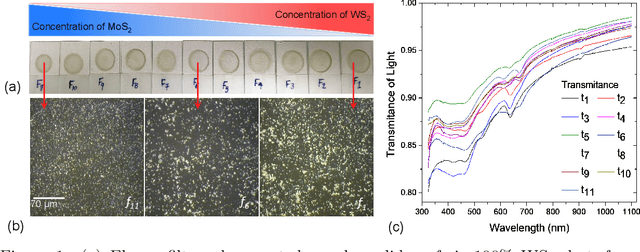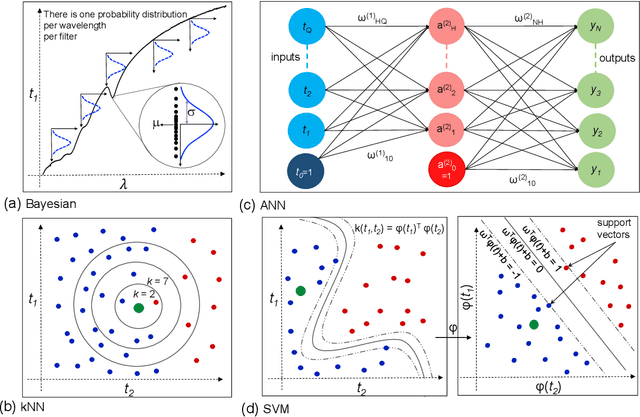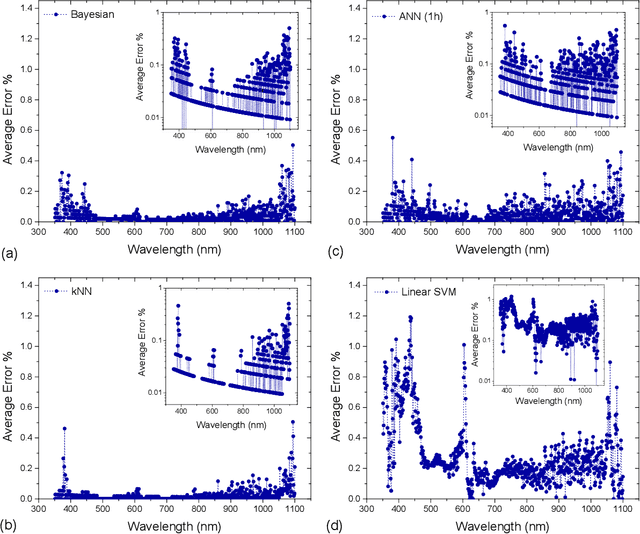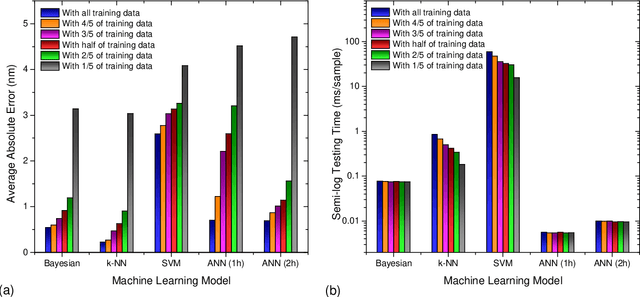Development of Use-specific High Performance Cyber-Nanomaterial Optical Detectors by Effective Choice of Machine Learning Algorithms
Paper and Code
Jan 03, 2020



Due to their inherent variabilities,nanomaterial-based sensors are challenging to translate into real-world applications,where reliability/reproducibility is key.Recently we showed Bayesian inference can be employed on engineered variability in layered nanomaterial-based optical transmission filters to determine optical wavelengths with high accuracy/precision.In many practical applications the sensing cost/speed and long-term reliability can be equal or more important considerations.Though various machine learning tools are frequently used on sensor/detector networks to address these,nonetheless their effectiveness on nanomaterial-based sensors has not been explored.Here we show the best choice of ML algorithm in a cyber-nanomaterial detector is mainly determined by specific use considerations,e.g.,accuracy, computational cost,speed, and resilience against drifts/ageing effects.When sufficient data/computing resources are provided,highest sensing accuracy can be achieved by the kNN and Bayesian inference algorithms,but but can be computationally expensive for real-time applications.In contrast,artificial neural networks are computationally expensive to train,but provide the fastest result under testing conditions and remain reasonably accurate.When data is limited,SVMs perform well even with small training sets,while other algorithms show considerable reduction in accuracy if data is scarce,hence,setting a lower limit on the size of required training data.We show by tracking/modeling the long-term drifts of the detector performance over large (1year) period,it is possible to improve the predictive accuracy with no need for recalibration.Our research shows for the first time if the ML algorithm is chosen specific to use-case,low-cost solution-processed cyber-nanomaterial detectors can be practically implemented under diverse operational requirements,despite their inherent variabilities.
 Add to Chrome
Add to Chrome Add to Firefox
Add to Firefox Add to Edge
Add to Edge